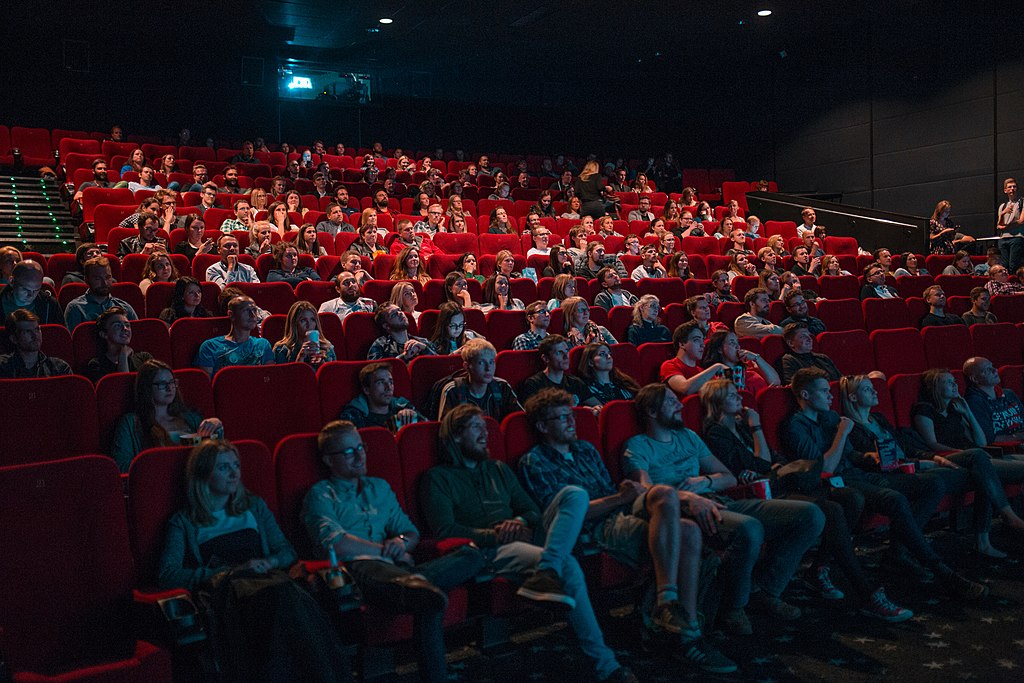The summer of Barbie had everyone convinced that we were entering a new era of cinema: it was time to put the spotlight on movies by women, for women. Even in the broader world of pop culture, the colour pink taking over everything from brand advertising to fashion trends felt like a symbol for a new feminist renaissance. It’s tempting to fall into the trap of thinking this way—who doesn’t want to live in the utopia that is Barbieland? But after almost half a year since the movie’s original release, time has granted us both perspective and newer movies to compare Barbie with.
September 2023 saw the release of Bottoms, a satirical teen sex comedy centering around the lesbian experience, directed by Emma Seligman. While the movie received a warm welcome in theatres, largely due to its popularity in online subcultures, its box office numbers stand nowhere near those of Barbie. This is mostly unsurprising—and likely a confusing point of comparison for many, since there are seemingly few reasons to mention these movies in the same breath. After all, Bottoms doesn’t market itself as a feminist movie in the way that Barbie does. The movie is satire from start to finish, never missing a chance to be self-reflexively ironic, even in the poster’s slogan. The creators don’t want you to interpret it as a serious movie about lofty ideas like “female empowerment”—that just wouldn’t be as funny.
Yet, that is precisely what works in favour of Bottoms. No one expects it to rewrite the feminist manifesto. Barbie, on the other hand, launched itself through an explicitly “feminist” campaign from the very beginning. And in doing so, it inadvertently shot itself in the foot—Barbie is so obsessed with performing an ideal of feminism that it loses sight of what real anti-oppression looks like.
For every person in the theatre who was moved to tears by the scene, there was at least one other person who described it as pedantic, shallow, or too simplistic to have any real meaning.
Take America Ferrera’s polarizing monologue towards the end of the movie. “It is literally impossible to be a woman,” she starts, before itemizing an inexhaustive list of the double standards that women are expected to fulfill in society. For every person in the theatre who was moved to tears by the scene, there was at least one other person who described it as pedantic, shallow, or too simplistic to have any real meaning. It’s not too much of a stretch to say that Ferrera’s delivery of the lines largely influences the way that people respond to the scene—if it wasn’t for her acting, the emotional impact of the monologue would fall flat. Regardless of what your reaction to Ferrera’s speech may have been, it is important to recognize that the context of the scene in the movie is inherently flawed: it hinges on the concept of “fixing” the Barbies’ cognitive dissonance through a feminist rant. Not only does this imply that the problems of sexism are confined to the social expectations of women, but it also suggests that these problems can be simply solved if women gain self-awareness.
If you’ve seen the movie, you’ll know that the next scenes follow how the Barbies regain control of Barbieland by giving the same speech to all the Barbies and tricking the Kens. These reductive ideas can be harmful for public perceptions of sexism—especially when one considers the film’s intended audience. People have counteracted criticism of the movie’s failed attempts at engaging with feminist ideas by arguing that Barbie is a kid’s movie, or that it’s intended as an “intro to feminism” for audiences that might be otherwise unfamiliar with these ideas. This is precisely why Barbie’s lack of critical thought can lead to the audience internalizing oversimplified ideas—such as the suggestion that parroting empty words without engaging in real action is enough to overthrow the patriarchy.
On the other hand, Bottoms never wastes a single second trying to explain itself to the audience. Each of the characters is presented as they are, with jokes that refuse to justify themselves.
The truth is that Barbie is invested in the capitalist project of catering to every possible demographic, thanks to the fact that it is sponsored by Mattel. (It’s why Ken almost completely overshadows the title character in terms of screen time and fan favouritism.) On the other hand, Bottoms never wastes a single second trying to explain itself to the audience. Each of the characters is presented as they are, with jokes that refuse to justify themselves. It doesn’t try to purport an explicitly feminist message like Barbie—but the very existence of the movie, which operates outside the bounds of mainstream heteronormative media, is political.
If Barbie is a polished, sanitized, shiny emblem of feminism, Bottoms is exactly the opposite. It’s ugly, messy, and violent, and it’s completely uncensored. On creating queer characters that are unabashedly terrible and horny, director Emma Seligman said that she “tend[s] to write shittier characters” since it feels more true to the real queer people she knows. This sense of relatability is reflected through the majorly positive audience reception to the movie. Bottoms lets young queer people see themselves reflected on the screens as they are, and through its use of a teen comedy narrative, it inserts queer youth into a genre they have traditionally been excluded from. The choice to depict an all-girls fight club—and explicitly showing these girls beating each other up onscreen—directly talks back to the misogynistic phantoms that exist in cinema. Movie-going audiences are barely used to seeing queer women talk about explicit topics on-screen, so to depict so much uncensored violence between female characters is a bold leap towards greater freedom of subjects in women’s media.
This brings us to the age-old question: what do we need from women’s media in the first place? Is it big, flashy feminist messages that take the world by storm, or is it unexpectedly brave movies that dare to exist in a world that won’t give it mass attention?
At the same time, independent movies like Bottoms prove that women creators don’t necessarily need massive commercial success in order to connect with their audiences.
It would be reductive to pick either option as the “correct” answer. For all of Barbie’s flaws, its success showed major media companies that audiences are interested in watching movies written by women, about women. The world of women’s cinema will feel its impact for years to come, and in a perfect world, Barbie’s legacy can help spotlight lesser-known women’s stories in the hopes that they can achieve the same amount of success. At the same time, independent movies like Bottoms prove that women creators don’t necessarily need massive commercial success in order to connect with their audiences. Bottoms challenges sexist norms set by the patriarchy about what a typical “women’s movie” should look like by refusing to define itself within any sort of limits.
Both movies have been well-received, and are probably on their way to becoming cinematic staples in a few odd years. We have definitely come a long way from past traditions of movies dominated by internalized misogyny and pitting women against each other. The landscape of women’s media is constantly changing to meet the needs of its time, and what we see in the media today is no exception.








